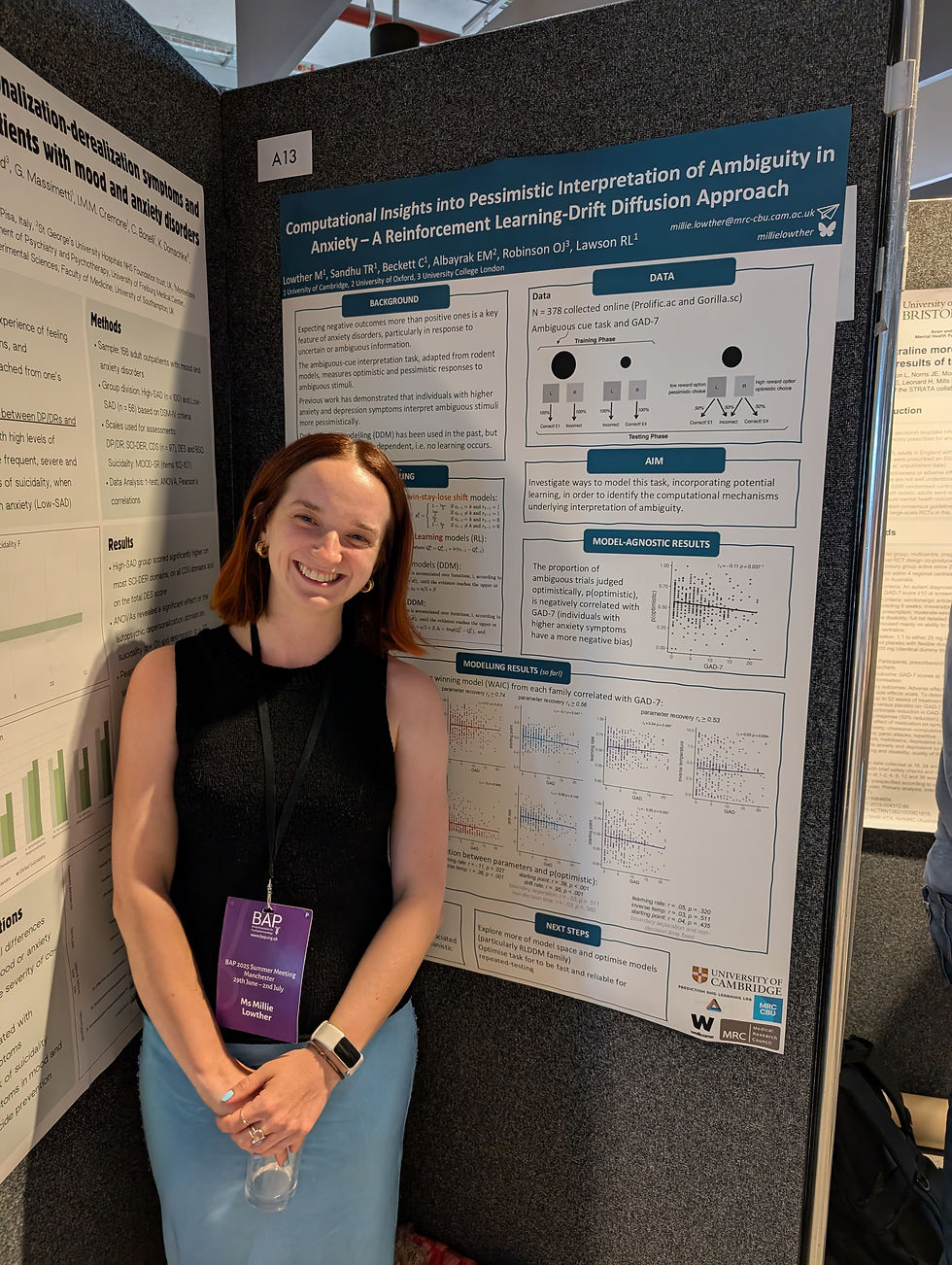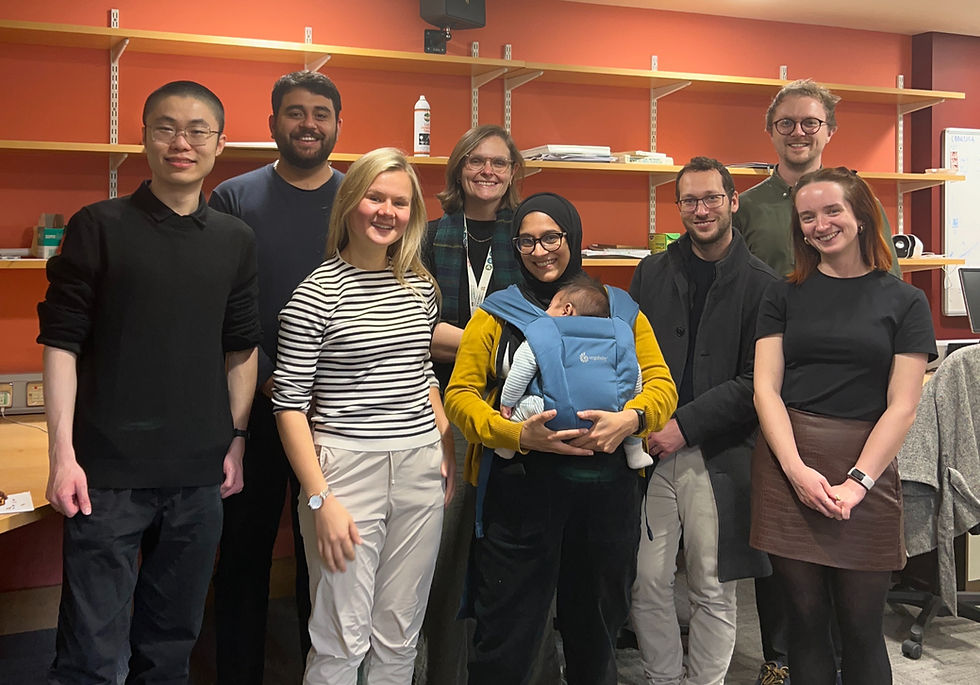BAP 2025 round up!
- beckyneuro

- Jun 30
- 2 min read
The PaL Lab made a strong showing at this year’s BAP meeting in Manchester, with an eclectic mix of posters and talks spanning computational psychiatry, neurochemistry, and development.
Friederike Hedley presented Transdiagnostic symptomatology amidst global uncertainty, using longitudinal network analyses to show how intolerance of uncertainty acts as a bridge linking anxiety, depression, and anhedonia when the world feels unpredictable.
Nazia Jassim shared new 7T MRS findings in Region-specific Glx predicts volatility beliefs, demonstrating that excitatory neurochemistry in distinct cortical regions relates to how people infer environmental change in a hierarchical learning task.
Milly Lowther discussed Computational insights into pessimistic interpretation of ambiguity, combining reinforcement learning and drift-diffusion modelling to reveal that anxiety biases decision starting points toward negative interpretations, rather than altering how outcomes are learned.
Bowen Xiao presented Uncertainty promotes hypervigilance, showing that when uncertainty rises, attention becomes more diffuse and sampling intensifies — a mechanistic account of anxious scanning behaviour.
Calum Guinea shared Anxiety and depression interact with learning and effort-based choice, demonstrating that people are generally more motivated to work for reward than to avoid loss, but that this balance shifts systematically with symptom load.
Tim Sandhu presented Baseline-dependent atomoxetine effects in aversive learning, showing that noradrenergic modulation through atomoxetine alters uncertainty estimates in a baseline-dependent way — helping to explain why pharmacological effects vary across individuals.
Tom Murray wrapped things up with Induced affective biases arise from perceptual shifts, showing through clever adaptation paradigms that negative affect biases emotional perception at a low, perceptual level rather than through later decision-making.
Altogether, a rich and lively set of contributions - from molecules to maths to mood - capturing what the PaL Lab does best: using computational and neurobiological approaches to understand how the brain navigates an uncertain world.











Comments